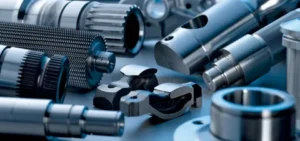In the realm of industrial applications, efficiency and durability are paramount. Among the many components crucial for various processes, stainless steel corrugated tubes stand out as a versatile solution offering both reliability and flexibility. From maintaining fluid flow to facilitating heat exchange, these tubes find extensive use across multiple industries. Let’s delve into the world of stainless steel corrugated tubes, exploring their different versions and the myriad of applications they serve.
Understanding Corrugated Tubes:
Before we dive into the specifics, let’s understand what corrugated tubes are. Imagine a regular tube, but with ridges or folds along its length. These ridges, or corrugations, add strength and flexibility to the tube, making it suitable for a wide range of applications. Now, when this concept is applied to stainless steel tubes, we get stainless steel corrugated tubes.
Versions of Stainless Steel Corrugated Tubes:
- Stainless Steel 304H Corrugated Tubes: Stainless steel 304H is a high carbon variant of the 304 grade, known for its excellent corrosion resistance and high temperature strength. SS 304H Corrugated tubes made from this material are ideal for applications requiring resistance to oxidation and scaling at elevated temperatures, such as in heat exchangers and boilers.
- Stainless Steel 310/310S Corrugated Tubes: Stainless steel 310 and 310S are heat-resistant alloys widely used in high-temperature environments. Stainless Steel 310/310S Corrugated Tubes made from these materials exhibit exceptional resistance to oxidation and corrosion, making them suitable for furnace parts, kilns, and other thermal processing equipment.
- Stainless Steel 310H Corrugated Tubes: Stainless steel 310H is a high carbon version of 310, offering superior high-temperature strength and excellent resistance to thermal fatigue. Corrugated tubes made from 310H are commonly employed in the petrochemical and chemical processing industries for applications involving harsh operating conditions.
- Stainless Steel 316 Corrugated Tubes: Stainless steel 316 is renowned for its superior corrosion resistance, especially in harsh environments containing chlorides and acids. Corrugated tubes made from 316 stainless steel are extensively used in industries such as marine, chemical processing, and pharmaceuticals, where corrosion resistance is paramount.
Applications Across Industries:
Now that we’ve explored the different versions of stainless steel corrugated tubes, let’s examine their diverse applications across industries:
- Petrochemical Industry: In petrochemical plants, corrugated tubes are utilized in heat exchangers, condensers, and piping systems to handle aggressive chemicals and high temperatures while ensuring efficient heat transfer.
- Food and Beverage Industry: Stainless steel corrugated tubes find use in food processing equipment, providing hygienic and corrosion-resistant solutions for conveying fluids and maintaining optimal processing temperatures.
- HVAC Systems: In heating, ventilation, and air conditioning systems, corrugated tubes play a crucial role in facilitating heat exchange, refrigerant flow, and condensation removal, thus contributing to energy efficiency and indoor comfort.
- Automotive Sector: Corrugated tubes made from stainless steel are employed in automotive exhaust systems, where they endure high temperatures and corrosive gases while aiding in noise reduction and emission control.
Corrugated tubes are essential components in various industries, offering flexibility, strength, and efficiency in fluid and gas transportation systems. These tubes come in different types, each tailored to specific applications and requirements. Let’s delve into the world of corrugated tubes and explore the various types available, shedding light on their unique characteristics and applications.
Types of Corrugated Tubes
- Single-Wall Corrugated Tubes: Single-wall corrugated tubes are the most basic type, featuring a single layer of corrugation along their length. These tubes are lightweight and flexible, making them ideal for applications where space and weight are critical factors. They find use in automotive wiring harnesses, drainage systems, and cable protection applications.
- Double-Wall Corrugated Tubes: Double-wall corrugated tubes consist of an inner and outer layer separated by a corrugated structure. This design enhances the tube’s strength and provides additional protection, making it suitable for more demanding applications. Double-wall corrugated tubes are commonly used in underground cable conduits, sewerage systems, and agricultural drainage.
- Annular Corrugated Tubes: Annular corrugated tubes feature a helical or spiral corrugation pattern, resembling a coiled spring. This design provides exceptional flexibility and allows for expansion and contraction, making them ideal for applications involving dynamic movement or vibration. Annular corrugated tubes find use in exhaust systems, flexible metal hoses, and HVAC ducts.
- Helical Corrugated Tubes: Helical corrugated tubes have a continuous spiral corrugation along their length, offering superior strength and rigidity compared to other types. This design provides excellent resistance to external pressure and torsion, making them suitable for high-pressure fluid transmission and structural support applications in industries such as oil and gas, aerospace, and construction.
- Interlocked Corrugated Tubes: Interlocked corrugated tubes feature interlocking or overlapping corrugated edges, creating a secure and leak-proof seal without the need for additional fittings or clamps. These tubes are easy to install and provide excellent resistance to axial tension, making them ideal for applications requiring quick assembly and disassembly, such as in firefighting equipment, pneumatic conveyors, and flexible metal hoses.
- Corrugated Metal Flexible Tubes: Corrugated metal flexible tubes combine the flexibility of corrugated tubes with the durability of metal construction. These tubes are commonly made from stainless steel or other alloys, offering high-temperature resistance, corrosion resistance, and mechanical strength. Corrugated metal flexible tubes find use in exhaust systems, hydraulic hoses, and industrial piping systems where flexibility and reliability are paramount.
Conclusion:
Stainless steel corrugated tubes, available in various versions tailored to specific requirements, serve as indispensable components across a multitude of industries. Their ability to withstand high temperatures, corrosive environments, and mechanical stresses makes them invaluable for numerous applications, ensuring efficiency, durability, and safety in diverse industrial processes. As technology advances and industries evolve, the demand for these versatile tubes is expected to continue growing, driving innovation and further enhancing their utility in the global industrial landscape.
